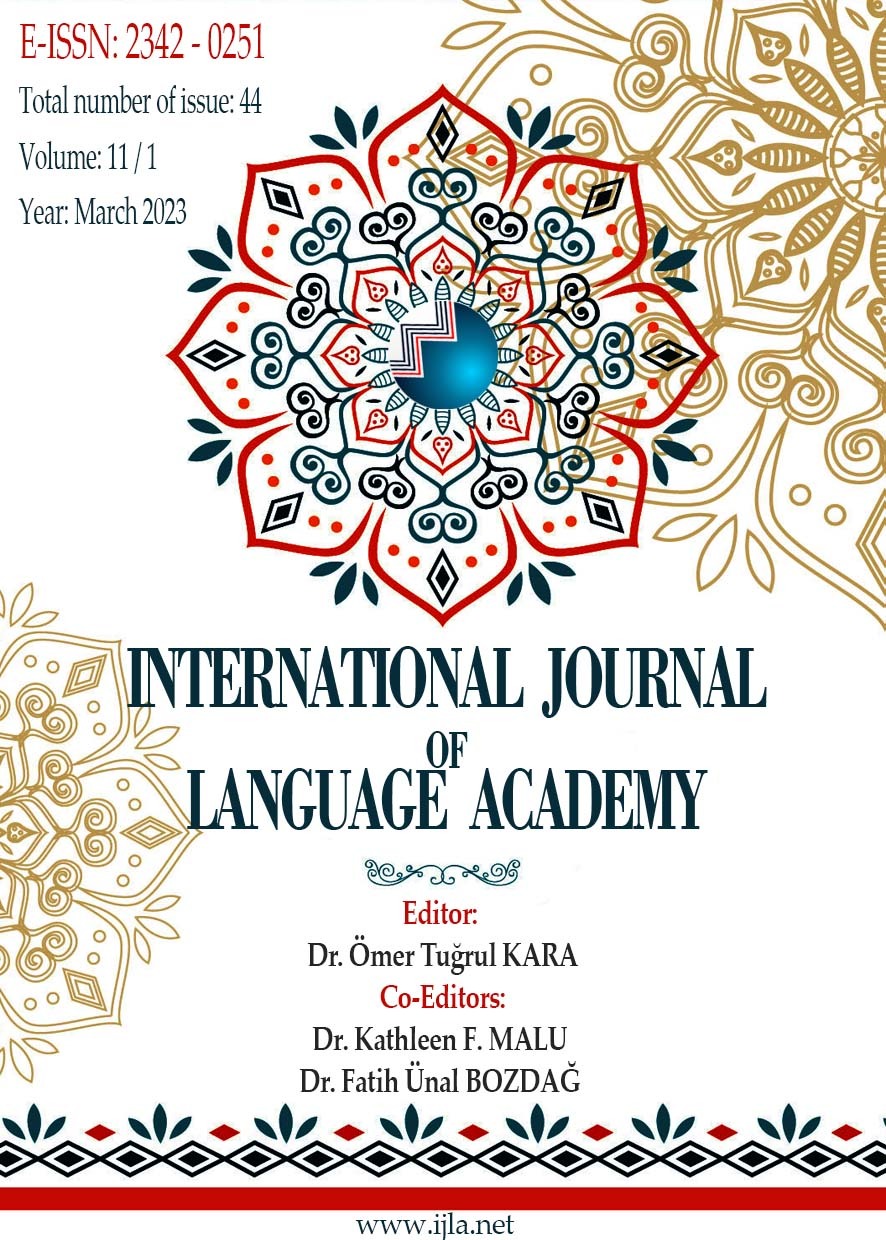Author :
Abstract
Karahanlı Türkçesi döneminde yazılan Dîvânu Lugâti’t-Türk, Türkçenin bilinen ilk sözlüğü olması dışında, yazıldığı dönemdeki Türk toplulukları ve dilleri hakkında türlü konu başlıklarına ayrılabilecek pek çok ögeyi ve bilgiyi içeren çok yönlü bir kaynaktır. Temelini bölümlere ayrılarak tanımlanan, örnekler ve tanıklar kullanılarak açıklanan, sözlük birimlerinin oluşturduğu Dîvânu Lugâti’t-Türk’te; madde başlarında, ekli sözlük birimlerinde, bölüm ya da bap bitimlerinde, gramer kategorileriyle ilgili değerlendirmelerde işlenen ekler de bulunmaktadır. Dîvânu Lugâti’t-Türk’teki ek açıklamalarının içerdiği anlam bileşenlerini ve bilgi türlerini belirlemeyi amaçlayan bu çalışmada, eserin taranmasıyla elde edilen veriler çerçevesinde, doğrudan ya da dolaylı olarak açıklanan ekler belirlenmiş; eklere ilişkin bilgilerin kapsamı, içeriği ve bunların aktarılma biçimi irdelenmiştir. Bu doğrultuda, eserde yer verilen eklerin bir ya da birden fazla yönü üzerinde durulduğu; açıklamaların sözcük, sözcük grubu, cümle düzeyindeki örneklerle desteklendiği ve diğer sözlük birimlerindeki gibi tanıklardan yararlanıldığı görülmektedir. Eklere yönelik açıklamalarda ise -kapsam ve diziliş açısından bir standart bulunmamakla birlikte- farklı anlam bileşenleri ve bilgi türleri kaydedilmiştir. Bu açıklamalarda, söz konusu ekin işlevi ya da kullanım amacı, kullanım yeri, kullanım biçimi, kullanım sıklığı, oluşum biçimi, yazımı, kullanıldığı lehçe ya da lehçeler, kullanıma özgü lehçe farklılıkları, kural dışı kullanımları, ekli sözcükle eş dizimli ögeler, ikili kullanımlar belirtilmiş; ekler karşılaştırılmış; Arapçadaki benzerlik ya da özdeşliklerden yararlanılmıştır.
Keywords
Abstract
Dìwān Luγāt at-Turk, written in the Karakhanid Turkish period, is not only the first known Turkish dictionary but also a accomplished source containing many elements and information regarding various topics about the Turkic communities and languages of the period. In Dìwān Luγāt at-Turk, the basis of which is formed by lexemes defined by dividing into chapters and explained by using examples and authentic references, suffixes are investigated at the beginning of articles, in suffixed lexemes, at the end of sections or chapters, and in evaluations of related grammatical categories. Therefore, this study aims to determine the semantic components and types of information contained in the explanations of suffixes in Dìwān Luγāt at-Turk. Suffixes explained directly or indirectly in the book were identified within the framework of the data obtained by document scanning. The scope and content of the information about the affixes and how they are conveyed were analyzed. As a result, it was observed that one or more aspects of the suffixes included in the work are emphasized. At the same time, sample sentences are provided to support explanations at the word, phrase, and sentence level, and authentic references are utilized similarly to the explanation of other lexemes. Different semantic components and types of information are observed in the explanations of suffixes, although there is no standardization in scope and sequence. In these explanations, the function or purpose of use of the suffix in question in addition to its place of use, the way it is used, its frequency of use, its formation and spelling, the dialect or dialects in which it is used, the dialectal differences specific to its use, its exceptional uses, the items collocated with the word with the suffix, polysemous uses are specified. Finally, it was seen that the comparison of suffixed is also included along with similarities or equivalence in Arabic.





